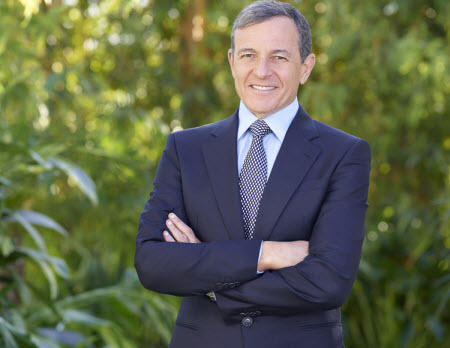Disney's Streaming Move Creates New Questions for Distributors

The Walt Disney Co.’s decision to take its powerful content direct to consumers via streaming puts its traditional distributors in an unprecedented place.
Already, traditional pay TV subscriptions are falling. Disney said Tuesday (Aug. 8) during its earnings call that ESPN’s subscriber total was down 3.5% -- a big bite for a network that makes about $7 per month per sub.
“There are many investors who believe that Disney, more than any other company, is responsible for holding what's left of the bundle together,” said analyst Todd Juenger of Sanford C. Bernstein, in a research note.
“Those that hold that view have been waiting for Disney to drop this bombshell, signaling the end of the bundle as we know it," Juenger added. "Did Disney just do that? The answer depends on how much you want to take the (scant) descriptions of these services at face value.”
Related: Losing Disney Movies May Not Hurt Netflix: Analyst
To Marci Ryvicker of Wells Fargo, Disney's announcement led to many unanswerable questions.
"The ESPN service sure sounded to us like management is positioning it (for now, at launch) as an 'add-on' service that would mostly sit on top of the existing ESPN linear networks and deliver extra value and features," Ryvicker said in a note. “How does this impact DIS's upcoming affiliate renewals (CEO Bob Iger did state that he has NOT had conversations with the cable distributors on these services just yet)? How will peers and partners react?”
MCN Flashback, July 27, 2015 > Report: Iger Says ESPN Could Go Direct to Consumer in Five Years
Iger indeed said during the earnings call that Disney had not discussed its plans with its distribution partners. He seemed to think there would not be a backlash.
“As we enter a new round of distribution negotiations, we have all the confidence in the world in our ability to strike deals that are favorable to the company, given the strength of the product that we offer, particularly the strength of the brands,” Iger said.
“If you look very specifically at ESPN, we still see it as a must-have service for the multichannel providers because of the array of product that ESPN has licensed, and what they produce is original programming for the service,” Iger said. “We have seen, as I think that many of you have, a pretty interesting and dramatic increase in -- I'll call it 'app-based media consumption.' Much of it is on over-the-top, direct-to-consumer services.”
How will cable operators react?
“The MVPDs also now face a tough decision," Juenger said. "View this as an upsell partnership? But watch your backs when Disney reaches the inevitable pivot point and decides to go around you.
“Disney makes it sound like they want to position this as a win/win: ‘Upsell your subscribers to new levels of service,’" Juenger continued. "On the other hand, all it will take is a flip of the switch, and Disney can cut the MVPD out of the equation entirely. We can't think of much upside for the MVPDs to be combative with Disney at this stage, at least for the big MVPDs.”
Related > Making the Right Moves: Distributors Strategize in a New Era of Programming
There will be even more pressure on small distributors who are not making money on video and might exit that business to keep making money on high-speed internet.
“But we think the MVPDs will certainly be trying to think of ways to protect themselves against the inevitable future date when Disney goes completely direct,” Juenger said.
Read more at broadcastingcable.com.
Multichannel Newsletter
The smarter way to stay on top of the multichannel video marketplace. Sign up below.
Jon has been business editor of Broadcasting+Cable since 2010. He focuses on revenue-generating activities, including advertising and distribution, as well as executive intrigue and merger and acquisition activity. Just about any story is fair game, if a dollar sign can make its way into the article. Before B+C, Jon covered the industry for TVWeek, Cable World, Electronic Media, Advertising Age and The New York Post. A native New Yorker, Jon is hiding in plain sight in the suburbs of Chicago.

